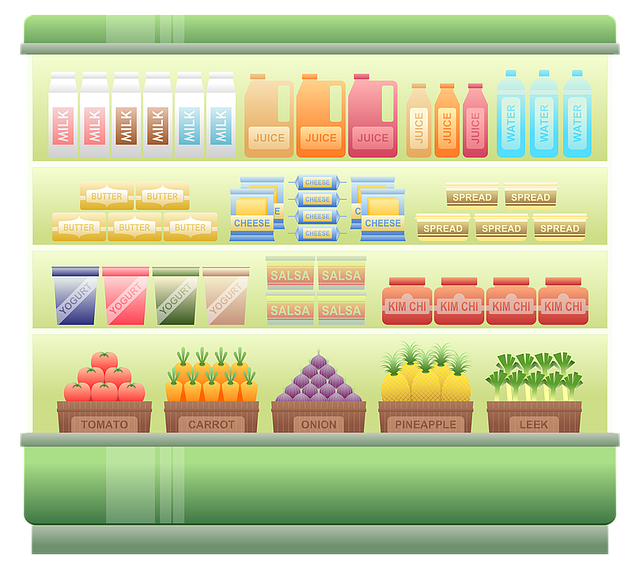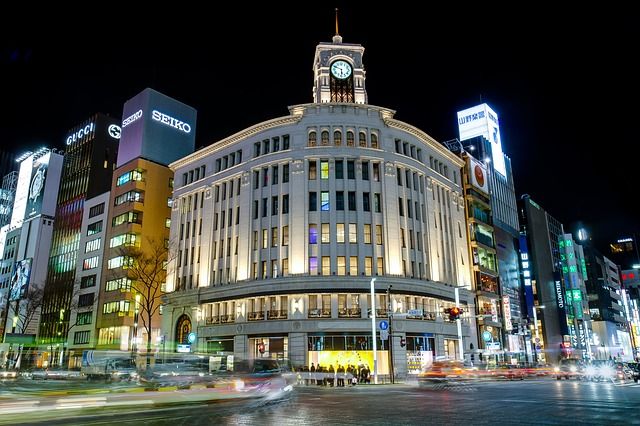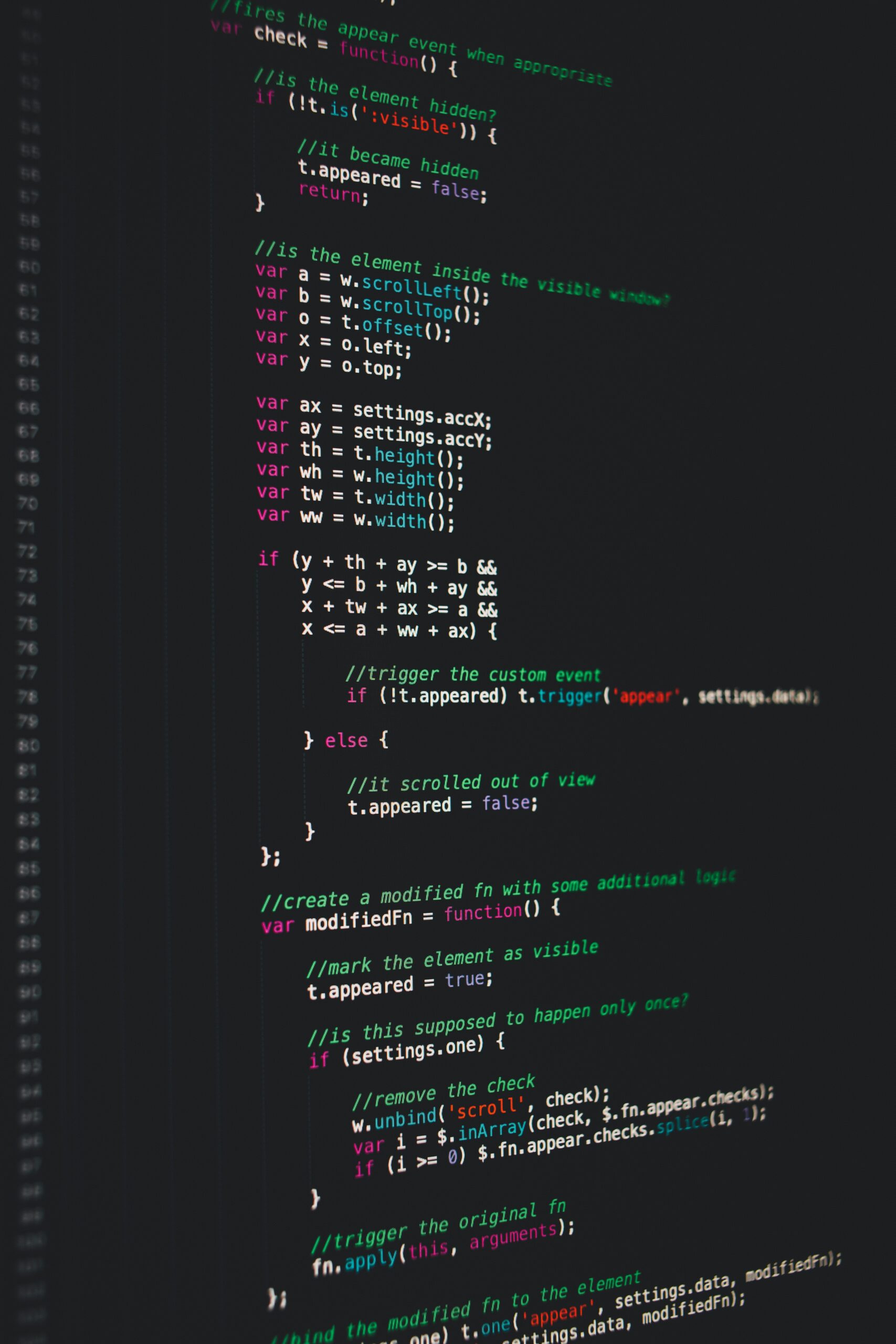
Managing CPGs for margin growth
There was interesting news this week that Unilever is attaining good revenue growth through upward management of prices, even though volumes have been flatter.
This illustrates a growing trend that we’re seeing – Consumer Product Good companies (CPGs) are using Revenue Growth Management (RGM) approaches to extract cash margin growth even in the face of tepid volumes. We’re helping many CPGs charts this course, and helping them build their RGM capabilities. Things are different now for CPGs, and this is what we’re calling 21st Century CPG Revenue Growth Management.
CPGs are now working in an global (and especially European environment) that is new and different than before, and which requires a different approach and thinking about Revenue Growth Management (RGM). The key questions to answer are:
- How CPGs operate at the intersection with retailers?
- What is the optimal brand / variant portfolio, SKU mix, price ladder, promotion tactics and trade terms?
- What is the right way of creating the RGM capability in terms of scale of resources, part time vs. full time, where they are housed in the organisation, the new process design and decision rights, right analytics to power more effective decisions and technology right-sizing (ERP vs. “best of breed” vs. intermediate tools vs. spreadsheets)
Why is this CPG context new?
We are witnessing many challenges that did not exist before. Top line growth has become extremely challenging with slowing top line growth in many developed markets. This makes RGM difficult because by its very definition it is primarily focused on growth. So RGM has to adapt to margin growth as a priority above top line.
Competitive pressures have ratcheted up with progressive customer consolidation and new upstart CPG brands stealing shares. There’s “free from”, there’s concern about packaging and plastics… The list goes on. In the same beat, pricing pressures have increased with higher buyer power and changing retailer structures. Margins on profit pools in traditional retail continue to be under pressure and there is increasing consolidation with the growth of local and international buying groups.
In addition to pricing and margin pressures, the retail trade structure across Europe continues to be in a state of flux, with consolidation of supermarkets and traditional trade, Horeca modernisation and changes in wholesale and distribution models. Borders between on and off-trade have blurred, ‘online’ continues to expand its presence.
On the top of all these, consumer habits keep on rapidly changing and evolving. Healthy, free-from-X (different ingredients), green, sustainable, recyclable / reusable / returnable packaging are some of the trends that have gathered momentum in recent years. And so this now begets alternative categories (e.g. healthy, organic), no-plastic packaging have emerged. (I’m writing this in a fancy Miami hotel charging $8 for a carton of Just Water, but hey the plant extract carton is better than a plastic bottle. Ok, I’m editing this now in less-fancy New York but drinking Fiji water in a thick plastic bottle shipped 8,000 miles, so I’m feeling more positive about the Just Water right now). Decision-making has become complex with competing factors like targeting vs. increasing SKU complexity. Operational hygiene factors have also proliferated with dimensions like direct delivery to stores, reduce returns, reduce wastage etc.
The volume of change in the retailer landscape makes it challenging for any CPG to effectively support retailers. For example, with the level of SKU proliferation and price ladders, it becomes difficult to design and implement targeted pricing and promotions, which also need to be dynamic, localised and personalised. The retailer lens is critical for effective RGM. CPGs cannot create ideal price ladders, SKU mix, and promotion plans, trade plans etc., without thinking of the different needs of retailers and channels. The more fragmented the retail landscape becomes and more is the proliferation of SKUs, it becomes a complex (and sometimes impossible) exercise for CPGs to create the optimum marketing mix for different retailers.
Why is the right answer to achieving an optimum price, promo and SKU mix different now?
The first challenge is trying to understand the SKU mix deeply, because 20% of SKUs always end up diluting margins. Always. It’s a golden rule of CPG. The more diverse the portfolio more is the need for this assessment. Then, CPGs should think about the price ladders of SKUs in their portfolio and how they interplay. It is important to make the distinction between price ladders and price ‘per se’ of any given SKU. The aim should be to stretch the price ladders so that the entry point is lower and exit is higher, resulting in discounts for large pack formats to reduce. In the current European context, promotions have all become nearly cannibalistic. CPGs have stopped getting incremental sales from promotions and so have retailers (who do them only for the promo money).
Other factors having an influence on the optimum marketing mix include:
- Trade money (promo funding, listing fees etc.)
- Stores within stores (in line with the whole brand experience trend, but this costs a fortune)
- Costs of building displays
- The equation of trade terms vs. customer value (total profit) vs. truly net prices accounting for all discounts on and off-invoice, volume payments and so on
Why is getting the enablers right so difficult now, even though you cannot discount their importance?
Well the first reason is the friction and political forces between countries vs. HQ, and (for example) Sales/ Pricing vs. Marketing for who owns price and pack architecture is much higher. The ultimate consequence is Sales sometime shooting themselves in the foot with too many promotions that destroy an elegant price ladder.
We often start RGM projects with conflicting viewpoints from Sales, Marketing and Finance teams on how to achieve growth. These viewpoints are reinforced by different incentives, metrics (e.g. sales growth, share, margins etc.) and functional leadership priorities. RGM has to be a dedicated function with full time resources to break down siloed thinking.
Technology also often emerges as an obstacle. As a CPG, there are some critical technological decisions that need to be taken to ensure successful RGM:
- Right sizing the technology / tools solution to RGM
- Having the right expectation of technology / tools vs. process re-design
Many CPGs have made significant investments in heavy ERP tools (e.g. SAP) for trade promotion management and optimisation (Trade Promotion Management / Customer Planning). However the technology is effective only when the organisational teams have the right analytical skills, supportive top management and decision rights to monitor and evaluate system recommendations. It is always a wise decision to spend less on the tools and more on the resources who are going to use them. We are also witnessing a trend of moving away from heavy ERP tools in RGM to best in class solutions. At OC&C we have our RGM CPG tool set comprising of SKURat, PriceMan, PromoMan, and PortfolioPlan (and for Retailers for category strategy, we have SpaceMan, but I’m waiting to July to write about that of course).
Finally, the retailer lens is extremely important to CPG RGM, yet too often CPGs (still) think of retailers as competitors and see the relationship through a zero sum (and not win-win) lens. To elevate transactional relationships with retailers, both CPGs and retailers can work together leveraging advanced analytics, i.e. what are the win-win scenarios for both retailer and CPG from a pricing and promo perspective.
What is the right way of building an RGM capability?
RGM is really about continuously improving a CPG’s pricing and promotional activity, and SKU mix by retailer / channel. RGM as a whole develops a strategy, aligns the organization, builds the right systems and tools and ensures a joined-up mindset critical for optimising trade. RGM is a journey and must be a capability looking at continuous learning and improvement, and not a one-off re-set.
RGM is greater than the sum of its parts. Initiatives that take a holistic approach towards all commercial levers achieve more than optimisation of a single lever, i.e. not price alone. It should incorporate multiple objectives over different horizons (e.g. 1-year quick wins vs. 3-year objectives vs. a 10-year long term strategy).
The retailer lens is crucial to incorporate in an RGM to fully understand customer needs and incentives. Additionally it should correctly account for the interplay of PPA, price, promo, terms etc., with feedback loops running between them. The retailer lens should take into account both global and local brands to arrive at a holistic view of capabilities.
Sophisticated analytics is needed to inform diagnostics and right-sized technology / tools are needed for monitoring and informing future decision-making.
CPGs are increasingly developing RGM processes and methodologies, but this needs to correctly position country-level dedicated teams / units to allow them to identify commercial opportunities. To do this effectively and on an on-going basis, full-time centralised capabilities and oversight is required. Naturally as an Analytics leader, I tend to point to Analytics and creating a “single version of the truth” and slaying some sacred cows, as at the heart of modern day RGM.
What are the potential pitfalls, and how to CPG’s get RGM wrong?
Similar to objectives, pitfalls are multi-dimensional, which is why on-going and full-time oversight is critical for successful RGM. Some pitfalls we have identified through our work include:
- Stand-alone and piecemeal analysis and not accounting for an overarching problem (e.g. pricing, SKU mix, promo etc.)
- Absence of a holistic mindset – At least 50% of CPG promotions are loss making (cannibalise the portfolio) and cause long term damage to the price ladders preventing trade up. Even if for one brand or SKU, the promo appears to be working
- Not accounting for the fact that retailers run their own promotions, without the CPG’s funding. This also can somewhat upset our price ladders
- Not recognising the importance of transparency in transfer pricing. Often we’ve seen country BU’s make incorrect decisions because of not taking account of transfer pricing and ultimate global margins
- Using true margins in profitability calculations and pricing ladders – different taxation and duty regimes have differing impact and so does local regimes (e.g. Statiegeld in the Netherlands)
- Not incorporating the whole portfolio (i.e. not just global or local brands and big or small brands) – RGM should be inclusive of the whole portfolio
- Lack of a holistic customer viewpoint – for example, focusing only on big, organised trade and thereby missing out on wholesale, horeca and evolving traditional / c-store trade
- Failure to stress-test approach using country pilots before broader rollout
- Absence of structure and processes to fully champion and embed change (e.g. lack of senior-level sponsorship, lack of format budget cycle preventing sustainability and cross-functional commitments)
- Lack of accountability and absence of KPIs to monitor and measure success
- Not seeing the need to change organisational processes, have quarterly accountability targets and not allowing back-sliding
- Not having the resilience to take decisions and stand by them over time (falling back to short term quick wins from time to time)
- Not having advanced analytics capabilities to support RGM resulting in failure – RGM also needs proper data infrastructure and functional capabilities, i.e. the ability to interpret and take optimum decisions (e.g. pricing expertise and not just generic analytics people)
- Failure to future-proof processes to account for innovation roadmaps, growth strategy and brand acquisitions
- In sum, failure to view RGM as a journey with annual evolutions
Ok, I know this is quite a long list. Sorry, but I’ve been doing this kind of work now for 30 years, so I have seen the good, bad, and the ugly.
How should (say) an OC&C consultant work with you?
We are highly collaborative, but very focussed in our support. We will work “with you”, and not “do the project to you”. Our approach is working with your team at all levels to drive a shared answer. We work largely on-site, and work in all the target countries. If you choose to work with us (and me), we make a number of commitments to getting this right, for example:
- We will provide fresh perspectives on accelerating growth while ensuring defensibility by bringing in experience from a range of industry sectors and customer groups. We are not shy of bringing grit into the oyster, and speaking truth to power
- We will bring a highly targeted, surgical approach – Our objective is to maximise your success in a short timeframe, and not to stretch the time we spend on the project (e.g. implementation, follow-up projects etc.)
- We will focus on critical decision points and key delivery tools to ensure you are best equipped to deliver success – We believe in supporting you on a defined programme of work (circa 5-6 months) without the need to create a multi-year programme for us
- Fundamental to our approach is equipping your teams with the right set of tools and capabilities to enable you to deliver success
- We will jointly build analytical and decision-making toolkits to ensure long-term success for revenue management, and stress test a robust delivery model that you can roll out across your teams
- We can work with your teams to breakdown silos – For example, breaking down the sales, marketing and finance silos with shared metrics and collaborative targets across the organisation (both in headquarters and country-level business units)
- We will create analytical and decision-making toolkits to ensure long-term success of revenue management and stress testing a robust delivery model that can be rolled out across the RGM team
- We will use our leading analytical capabilities to create and deliver sustained impact for your teams
- We use our proprietary CPG RGM assets to build bespoke tools to hand over to clients, tailored to their needs and in-house systems (e.g. price ladders, SKU mix, promo, and trade terms)
- Placing importance on senior sponsorship and practicing patience and long-term commitment are hallmarks of our relationships with clients
- In addition to creating an excellent RGM capability, we can also work with you on key aspects that influence the effectiveness of RGM – Reengineering processes and workflows, identifying training needs, organisational redesign, operating model evaluation, and need for cultural change
What is the right approach to design a 21st century RGM capability?
Multiple aspects need to be looked into and carefully managed to create a successful 21st century RGM. But the fundamental starting point is the efficient management of RGM. We strongly recommend managing RGM under a centralized and coordinated operating model, rather than as disjointed functions. RGM needs to be at the heart of the action, and should be housed under sales. In such an organisation design, sales, marketing and finance will share the same metrics and goals, and will have the same point of view on improving revenues. This model can be replicated at a global headquarter level and in country-level business units, with headquarter providing clear frameworks, tools, and allowing best practice and learnings to be shared across countries.
There are other crucial factors that influence the success of RGM. CPGs need to focus on the right brand portfolio for growth, all the while incorporating emerging whitespace opportunities, category trends and future profit pools. Against this scenario, CPGs are looking for support to develop an actionable marketing and commercial portfolio strategy (e.g. pricing architecture, pack / assortment differentiation, positioning etc.) focused on driving share gain. Investing in winning retailers, ensuring that European pricing and trade strategy targets are met and rewarding growing retailers, who will deliver long-term margin growth and ROI, are other important factors. Assortments should be optimised for each store format and SKUs should only be selected if they meet the needs of a shopper segment in a specific format.
We believe there is a right way to kick-off an RGM project, which is to understand the challenges from a number of lenses and not jumping straight in. Strategy alignment is important at the outset, with end objectives defined and a shared approach towards the project in place. We start off by identifying RGM best practices at the very beginning. Your organisation will be evaluated against the OC&C benchmark diagnostic for price harmonisation and trade terms strategy by comparing against other CPGs (based on interviews, OC&C project experience). We then conduct an opportunity assessment for optimisation of each commercial lever based on:
- OC&C experience and external benchmark
- Previous CPG experience (e.g. analysing lead countries who might do RGM best)
- Management interviews
- Workshop with key stakeholders on potential end objectives
We rapidly assess and prioritise commercial levers to identify quick wins and longer term prizes available to the organisation. Prioritisation of levers will be done by country to inform marketing and commercial portfolio strategy before detailed deep dives for diagnostics. The deep dives will be based on OC&C data modelling / application of advanced analytics to pricing ladders, promo, SKU mix and trade terms.
In parallel, we also assess your operational enablers, which can include process, org design / operating model, resources, technology / tools etc. A rapid assessment of complexity in bridging the gap in enablers will be conducted, which will be based on:
- External benchmarks
- Previous experience
- Management interviews
After this assessment, a workshop can be conducted to agree on priority enablers and the level of gap to be filled. Deep dives aimed at country business units and headquarters will address design and decision rights, org design and operational model, quantity of resources full time / virtual dedicated to RGM, location of RGM sites (e.g. sales) and right-sizing the supporting technology (e.g. spread sheets vs. SAP) and the likely technology roadmap. These deep dives will inform the evolution / roadmap of “enablers” and how they will develop in 1-3 years. A final risk assessment will be conducted to inform timelines.
As we identify and prioritise the commercial levers and the enablers, the RGM strategy will be shaped by the following key questions:
- What are the potential end objectives? What are the implications of these choices for our approach?
- What metrics should we use to guide our work? – For example, top line vs. cash contribution vs. dead net?
- What are examples of CPG best practice in RGM, and in associated activities like price harmonisation / trade terms strategy? What can CPGs learn from these?
- What are retailers’ perspectives on RGM, price ladders, SKU rationalisation, price harmonisation etc.? What are their needs in terms of a pricing strategy or trade terms?
- What are the strategic options for CPGs in terms of pricing and trade terms?
- What is the profitability level by channel / retailer when we look at it country by country?
- The final outcome is the end model design (levers and enablers) and a report of impact evaluation / prioritisation of end levers (created primarily using our advanced analytics capability). Typically the key deliverables include the following:
- Pricing/ Price ladders (and journey for pricing harmonisation across countries/ channels)
- SKU mix recommendations
- Promo do / don’ts (noting also different country/account policies for returns, re-cycling taxes etc.)
- Trade terms recommendations
- Commercial plan and negotiation framework (migration plan to new trade terms and pricing, which might require multiple cycles where the gaps are the biggest)
- Building “value creation plans”
- Enablers model design, created by our assessment phase and internal workshops with headquarters and countries (Key deliverable will be the “future” org design, process design and technology evolution (but as a roadmap and not a sudden change; Implementation of these plans will be via VCPs, working closely with country teams and through pilots in some specific countries)
- Support Key Account Managers in countries in scope in developing value creation plans (templates, workshops etc.)
- Map key value creation drivers per account
- Crafting emerging growth stories (including Key Account strategy, category growth etc.)
- Mapping key pain points of the integration plan (e.g. one country may have to go through substantial changes compared to others)
- Define non-negotiable dimensions and map out room for negotiations within framework
- Communication plan / recommendations for approaching negotiations
- Role plan for negotiations (using simulation of 3-4 scenarios) and migration plan
- Define implementation scenarios
- Define mitigation plan from old to new; Training and capability building plans to make this happen
And what’s our conclusion?
21st Century Revenue Growth Management is very different kettle of fish. CPGs now operate in an environment characterised by a different set of challenges and having a sophisticated RGM capability has become crucial. This RGM capability needs to have some defining characteristics:
- Dedicated full time (not virtual) team housed close to the action in Sales
- A structure and collaboration approach that mirrors the country vs. headquarters relationship
- Breaking down of silos between sales (pricing, promo, trade terms), marketing (pricing and pack architecture, brand portfolio) and finance
- A realistic roadmap of self-financed achievements every year
- Not a one off re-set but a capability that helps achieve accelerated growth and profit each year
- Processes re-designed with new decision rights
- Efficient org design to put RGM at the centre. The politics may upset some people, but you either want growth or you don’t
- An operating model in sync with RGM objectives
- Right-sized technology / tools that are fit for purpose and are enabled by a strong analytics capability
It is really important to work with the right consultant to derive the core benefits, which include collaborative working, strong analytics team, tools that can be deployed quickly, a deep understanding of the reality of internal politics of building RGM, and the adoption of a comprehensive retailer lens. In summary, OC&C is that consultant and the partner you are looking for.
主要联系人

James Walker
Partner



